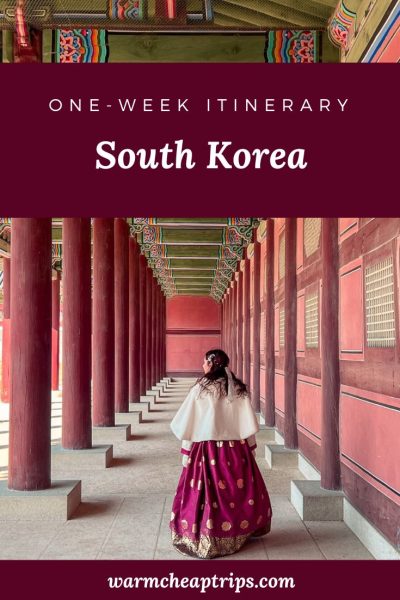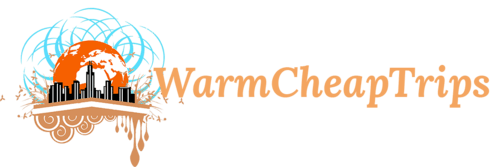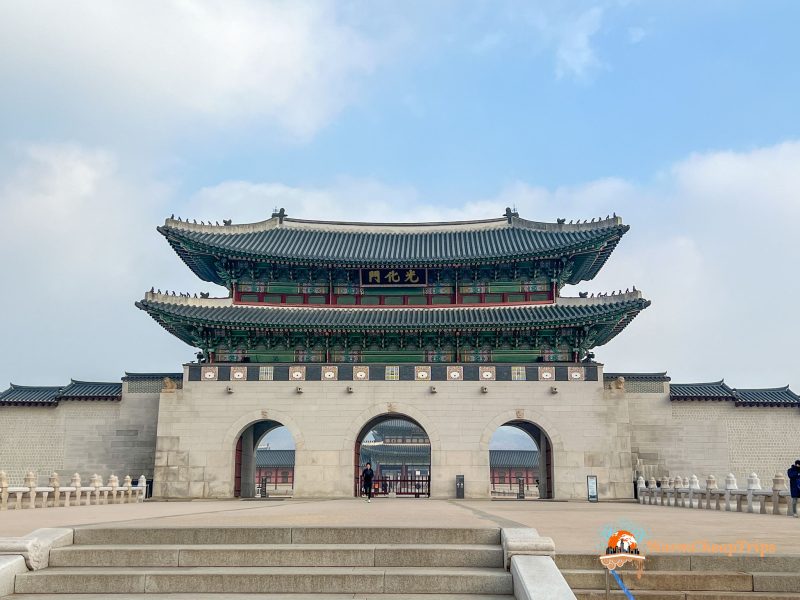Visiting South Korea was never really on my bucket list—I’m not a fan of K-dramas, K-pop, shopping, or beauty products, and even Korean food isn’t among my favorite cuisines. I don’t know much about Korea, and I hadn’t researched it much before going. We decided to go mostly because of my husband’s request and because it’s so close to Japan. Even after spending a week there and visiting a (small) part of it, I can’t say it stole my heart. That said, I’ll probably end up going back for the reasons above.
However, South Korea is becoming increasingly popular, thanks in part to Netflix hits like Squid Game, Crash Landing on You, or K-Pop Demon Hunters, and the way K-pop songs have invaded our heads—move aside Frozen! More and more people are also combining Korea with trips to Japan, sometimes even just making a short stopover in Seoul.
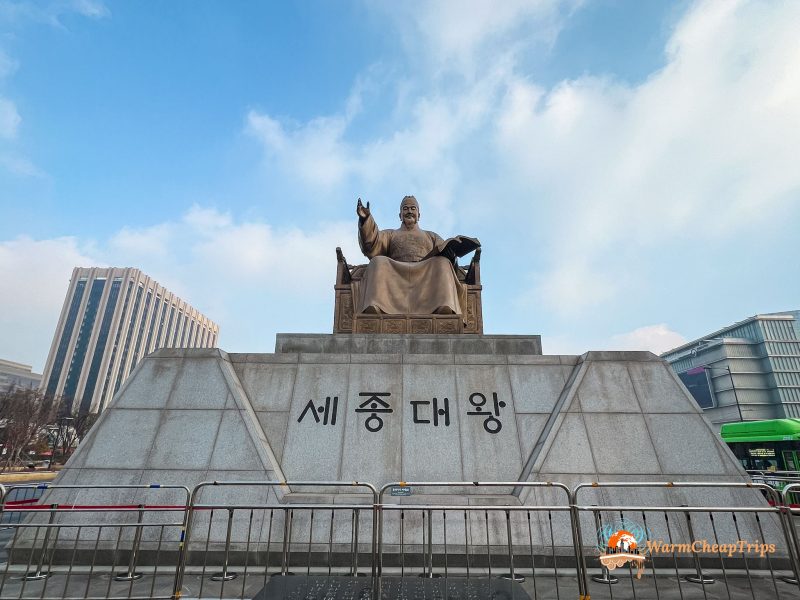

My One-Week Itinerary in South Korea
South Korea definitely requires more time to cover the main highlights. In my opinion, one week is only enough to visit Seoul and at most one additional stop, which for us was Andong—known as “the most Korean place in Korea,” as Queen Elizabeth was told when she celebrated her birthday there in 1999.
Day 1 – Arrival in Seoul
We arrived at Incheon Airport in the afternoon and, thanks to the convenient train connections, easily reached the city center and our accommodation in the Jongno 3 district. From there, many of Seoul’s main sights are within walking distance.
We immediately took the chance to explore the Insadong neighborhood, filled with artisan shops, artists, and tea houses, then visited Jogyesa Temple and Ikseon-dong Hanok Village, a maze of narrow alleys lined with shops and cafes, many inside traditional hanok houses.
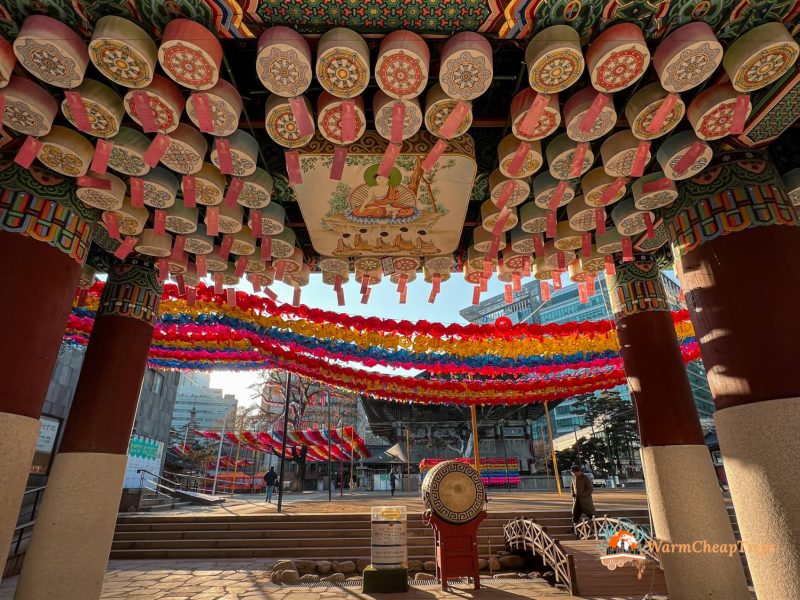

Day 2 – Seoul: Hanbok Rental & Imperial Palaces
Despite the cold, we decided to rent hanbok, the traditional Korean attire, for the whole day—this also grants free entry into all the Imperial Palaces in Seoul.
At set times in each palace, there are free guided tours (also in English), and we joined both at the largest and most famous Gyeongbokgung, and at the beautiful Changdeokgung, a UNESCO World Heritage Site. Since it was winter, we skipped the Secret Garden (which requires a paid ticket even with hanbok and is only accessible with a timed reservation) and instead visited Changgyeonggung Palace.
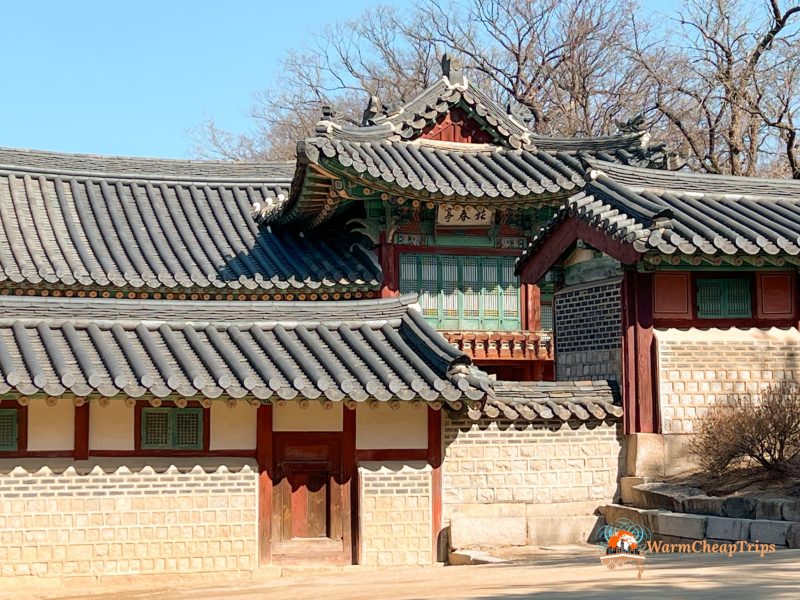

Day 3 – Excursion to the DMZ, Border with North Korea
This was the part of the trip I was most curious about: an excursion (which must be done with a guide) to the Demilitarized Zone (DMZ), the 4 km-wide strip of land between North and South Korea. Tours start early in the morning at fixed times, and there’s always the possibility that they could be canceled or certain areas closed at the last minute.
We opted for the half-day tour booked through GetYourGuide, though there are also full-day tours that include a suspension bridge or a boat trip.
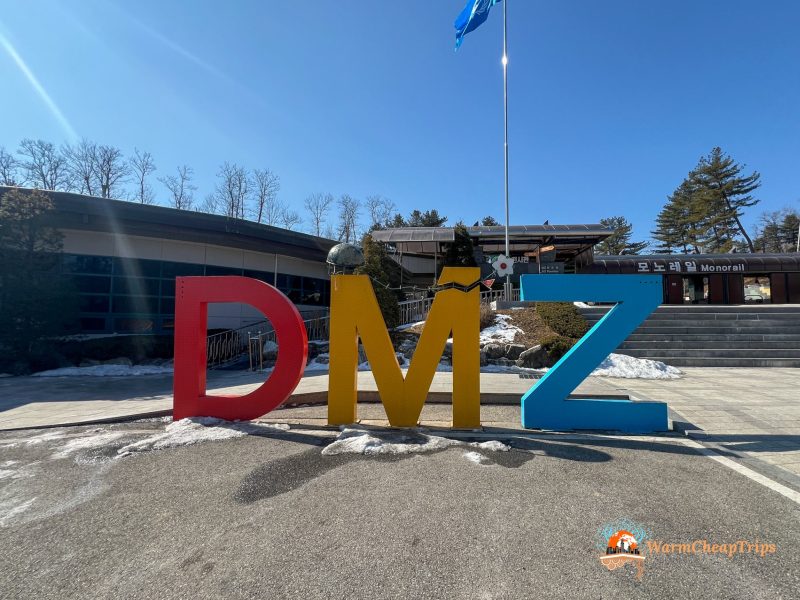

Day 4 – Seoul: Museums & Hongdae
A day dedicated to learning more about Korea’s history, starting with the War Memorial of Korea, which retraces the history of the country’s wars—from the Three Kingdoms era, through Japanese occupation, up to the Korean War. We then visited Seodaemun Prison, mainly used by the Japanese during the occupation. Honestly, I didn’t find it particularly engaging, especially compared to Hoa Lo Prison in Vietnam.
After all that history, we needed something lighter, so we headed to Hongdae, the youthful district full of clothing shops, cosmetics, street food, and restaurants. We spent the afternoon there enjoying food and shopping.
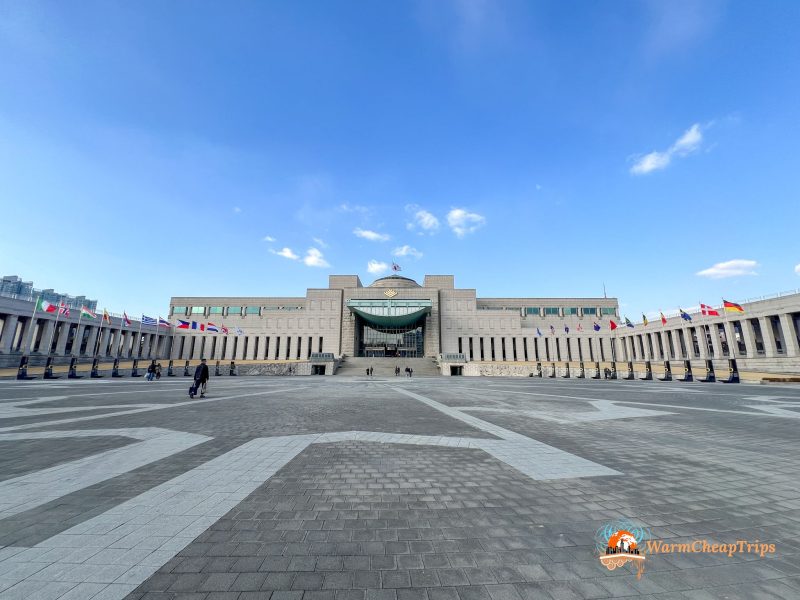

Day 5 & 6 – Andong
After about 2.5 hours on the KTX high-speed train (which I strongly recommend booking in advance), we reached Andong, considered “the most Korean place in Korea.” We visited Hahoe Folk Village, a UNESCO World Heritage Site where it truly feels like stepping back in time.
We stayed overnight at Jukheon Traditional House, a historic hanok residence just steps away from Bongjeongsa Temple.
The center of Andong itself is also worth visiting, with quirky statues of what I assume is the city’s mascot, and the unusual Sinse-dong Mural Village, full of murals and street art.
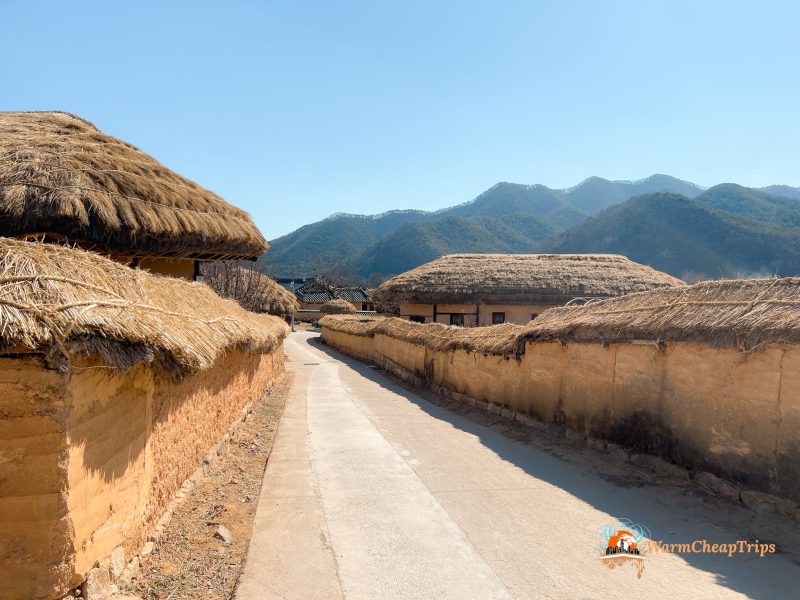

Day (6 &) 7 – Hanok Stay in Seoul & Return
After leaving Andong mid-afternoon, we returned to Seoul for one last night in a hanok in the Bukchon neighborhood. Staying overnight here allowed us to enjoy this traditional area without the daytime crowds, before saying goodbye to Korea with our morning flight.
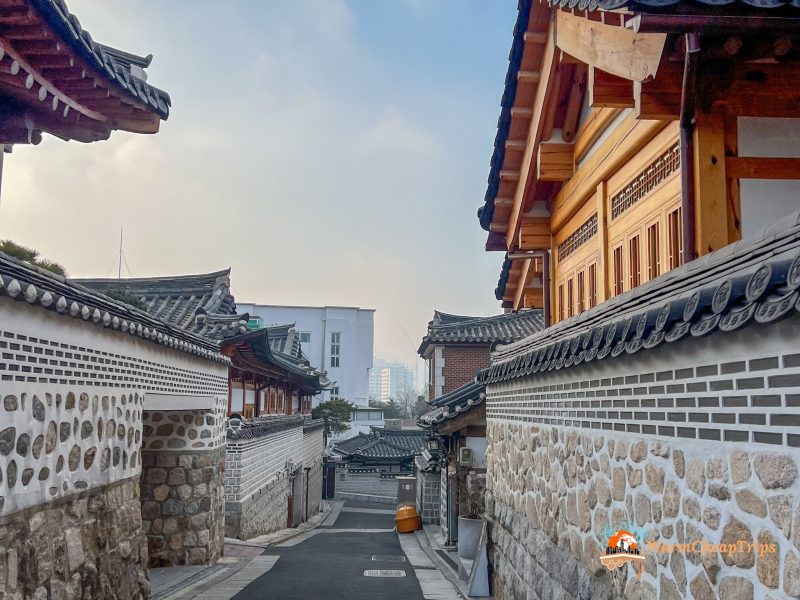

South Korea Itinerary – Useful Information
Travel Period & Weather
We visited South Korea in late February, which definitely isn’t the best time: temperatures were freezing. We had sunny days, but just days before there had been heavy snowfalls, and we could still see patches of snow in the countryside.
The weather was very dry and often windy, so those famous Korean face masks and creams were lifesavers against cuts and skin irritation. Temperatures hovered just above zero, and thermal underwear under winter clothes was absolutely necessary. All our guided tours went ahead as planned, but locals told us that in January and February tours are often canceled due to the cold, so keep this in mind. Winter isn’t the best time to visit Korea—the cold definitely slows you down—but the upside is fewer tourists, smaller tour groups, and lower hotel prices.
Entry Visa & Health Insurance
To enter South Korea, you need a passport valid for at least three more months and an outbound ticket. For some countries, like Italy ans Japan, until December 31, 2025, the K-ETA is suspended, and a 90-day tourist visa is granted upon arrival. You simply need to fill out the arrival card, either the paper version at the airport or the digital one up to 72 hours before. Filling it out digitally saves time at the airport.
Health insurance is not required to enter Korea, but as always, I strongly recommend a policy that covers anything that could happen abroad, especially outside Europe. I suggest Heymondo, which allows you to chat with support instead of calling, plus you get a 5% discount as my readers.


Time Zone, Electricity & Currency
Korea is in the same time zone as Japan, so GMT +9 and there is no change with winter and summer time.
Plugs are type C (European two-round-pin) and type F (Schuko).
Credit cards are accepted almost everywhere, though foreign cards sometimes have issues. I recommend Revolut, which worked everywhere for me, has no currency exchange fees, and lets you withdraw cash for things like street food stalls or topping up your T-Money transport card (unless you’re using WowPass, see below). For exchanging cash, the best rate I found was at a money exchange on the corner of Insadong, opposite the smoothie shop.
Internet Connection
Free wifi was less common than I expected—many cafes had none. It was available in train stations but was slow, so having your own connection is better.
Physical SIM cards with a phone number are available (valid 10–15 days), but they’re usually more expensive than eSIMs like Airalo. A pocket wifi is also a good option if you want unlimited data or to connect multiple devices.
In our case, Dice got the WOW Pass package, which included T-money and a 5-day eSIM, and we shared the hotspot. For the last few days, I activated this 3GB eSIM and shared my hotspot with him. This time we didn’t use Airalo, as their short-term plans weren’t cost-effective.
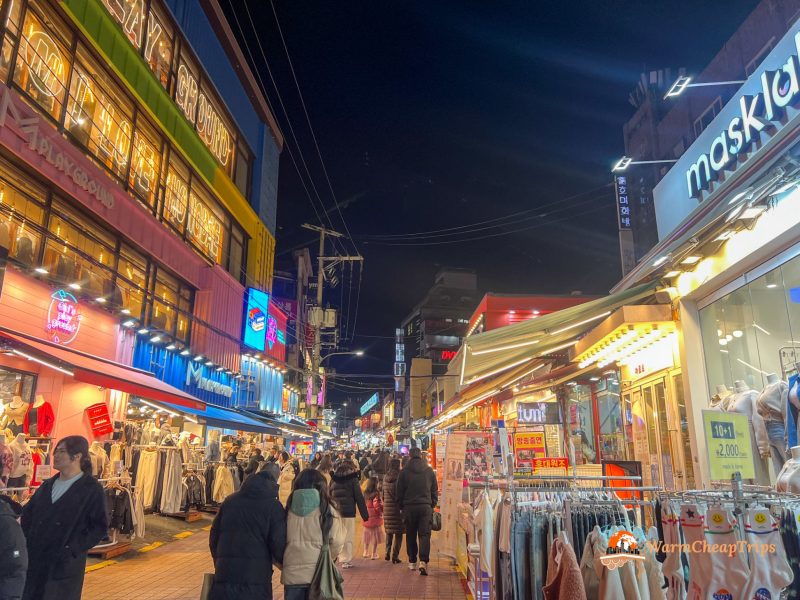

Must-Have Apps
-
Wow Pass & app – A reloadable tourist card available at many city locations (listed in the app). It includes T-Money for public transport and can be topped up with Apple Pay or foreign cards at a good exchange rate. You can use the balance to pay directly and, with my code TRRGRY4Z, get 0.5% cashback on every transaction.
-
Naver Map – Google Maps doesn’t work well in Korea, especially for walking routes. Naver Map is essential, though it takes a little getting used to.
-
Papago – Much more accurate than Google Translate for both text and images.
-
Uber – Works great in Seoul and Andong, where public transport is less frequent.
Costs of My Week in South Korea
Overall, Korea is slightly cheaper than Japan, especially for transport and hotel room size/value. Street food is very cheap, and beauty stores have great deals. Cafes were surprisingly pricey—sometimes I paid the same for coffee and cake as for a full meal (around €10 total for two). Our most expensive dinner was about €35 in total.
Of course, luxury restaurants and experiences exist, particularly in Gangnam and wealthy areas, but portions are generally large.
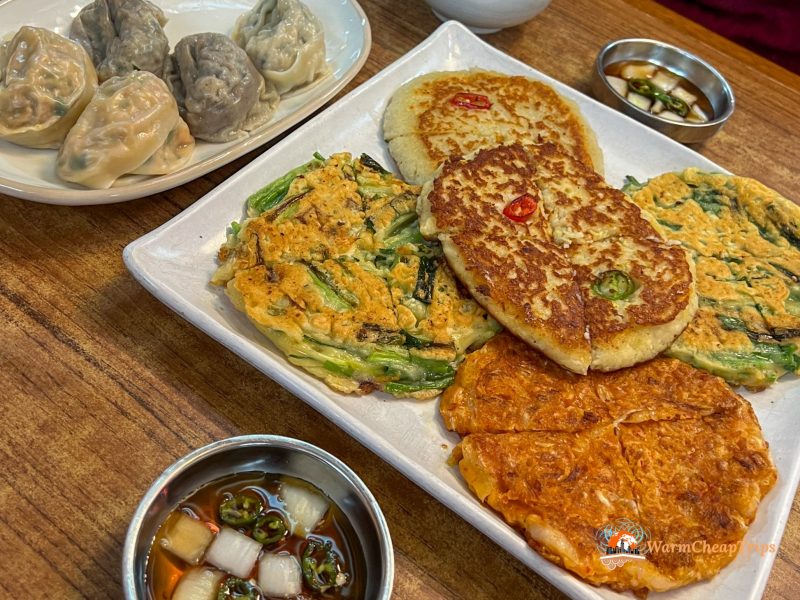

Accommodation
February is low season, which likely helped with hotel prices, but overall we found excellent value.
-
Seoul: We stayed in Jongno 3, well-connected by transport but within walking distance of the palaces, Insadong, and Ikseon-dong. At Amare Hotel Jongno, our room was huge, with a modern bathroom, shower, bathtub, and great amenities. Big soft bed, breakfast included (though limited in variety), and they stored our luggage for a night while we went to Andong. 475,000 won for 3 nights.
For the last night, we stayed at Bukchonae, a hanok in Bukchon Hanok Village. 130,000 won, no breakfast. Small room, just enough for futons, a little table, luggage space, and a tiny private bathroom (not always guaranteed in hanok). With floor heating, sleeping on the ground was surprisingly cozy, though firmer than tatami in Japan. Shoes are left in the outdoor rack, which meant cold shoes in the morning! Still, it was a lovely atmosphere, with a shared kitchen available. -
Andong: At Jukheon Traditional House, a 140-year-old building once visited by Queen Elizabeth II. Located just outside the city near Bongjeongsa Temple, with an outdoor courtyard (and a café in warmer months) and a small warehouse-museum displaying traditional farming tools. Simple rooms with futons and heated floors; bathrooms are shared. Breakfast was basic but sufficient, served in the room or courtyard depending on the season. 114,000 won.
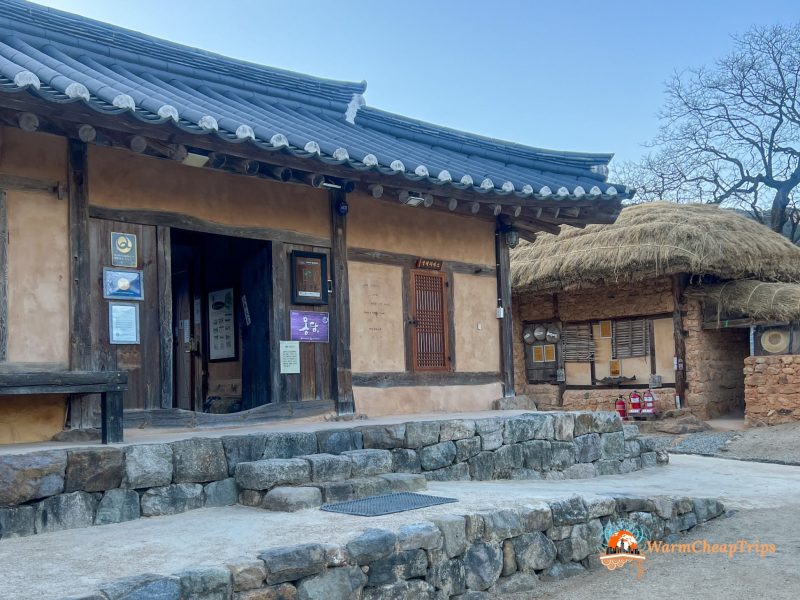
Transport
Local transport was very cheap, whether in Seoul (metro and buses are priced by distance) or Uber in Andong—trips from the city to Hahoe Village and then to our lodging cost around €15 for about half an hour, including part of the highway.
-
Flight: Direct Tokyo Narita–Incheon with ZipAir (low-cost), about 30,000 JPY roundtrip
-
KTX Seoul–Andong: 13,000 won each way, booked online in advance.
-
Train airport–city center: 4,400 won for the regular train, about 18,000 won more for the express.
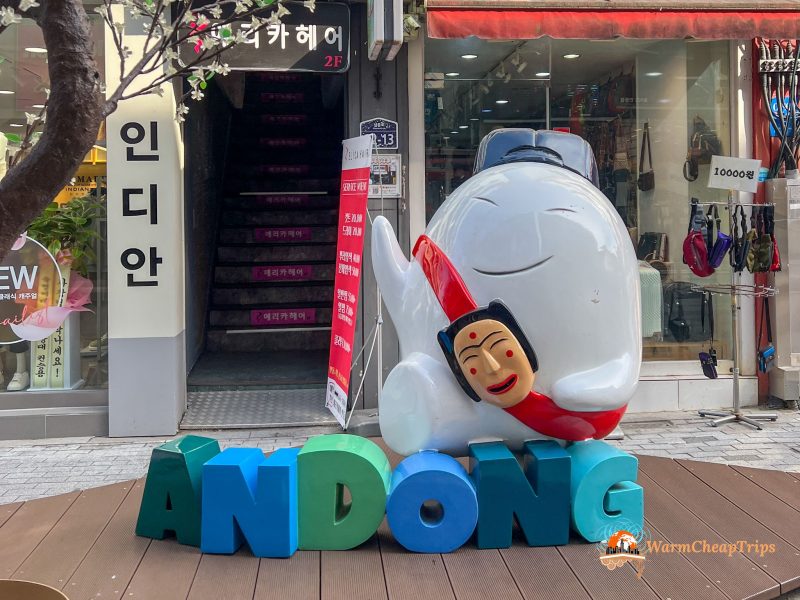
Activities
Most entrance fees are very cheap, and Seoul’s Imperial Palaces are free with hanbok rental.
-
Hanbok rental: Around the palaces, especially near Gyeongbokgung, there are many shops. Best to go early for more choice and less waiting. We booked through Klook, which was conveniently located between the palaces and near our hotel. We chose the basic plan for just under €20 per person for the whole day. However, the men’s hanbok seemed a bit plainer compared to those rented from other places.
-
DMZ tour: The most expensive activity, about €55 per person, booked via GetYourGuide. Includes bus transport, group guide, and entrance fees. Meals not included.
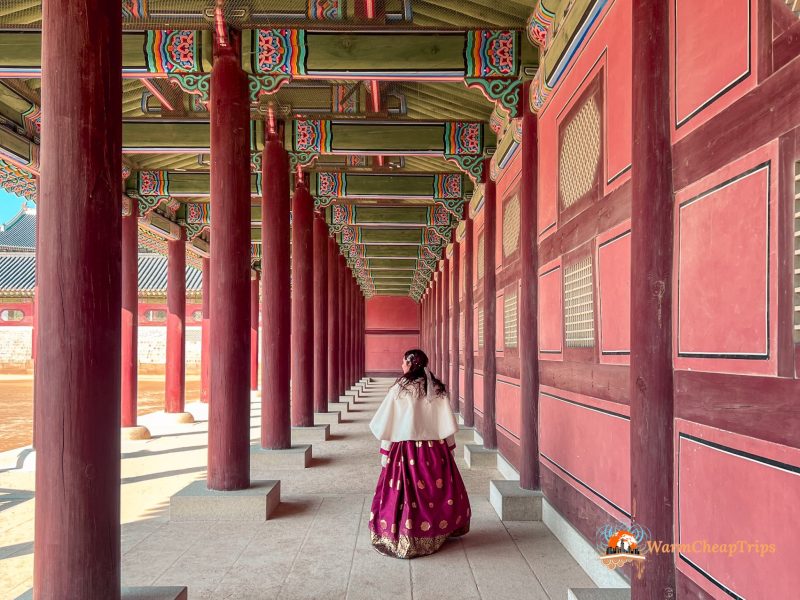

As you can see, this itinerary was fairly relaxed and light, especially compared to my usual itineraries. That’s partly because winter weather made things harder, and partly because I wasn’t as curious or eager to see everything, knowing I’ll almost certainly return. I didn’t feel any FOMO or compulsion to cover it all—which, honestly, is something I’m learning to let go of more and more in my travels.
Did you find this article useful? Buy me a coffee 🙂
